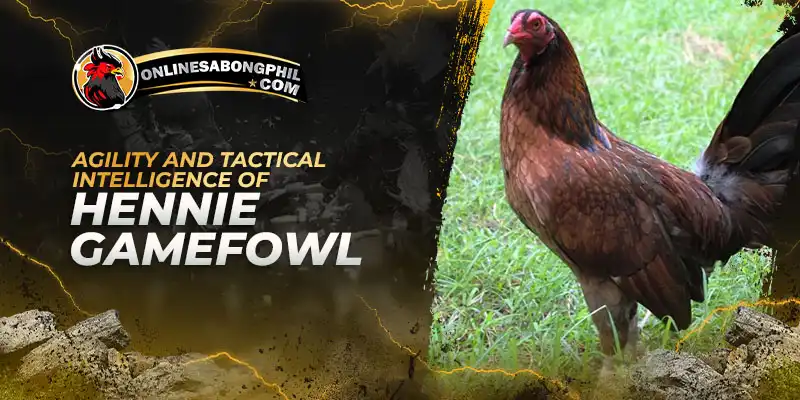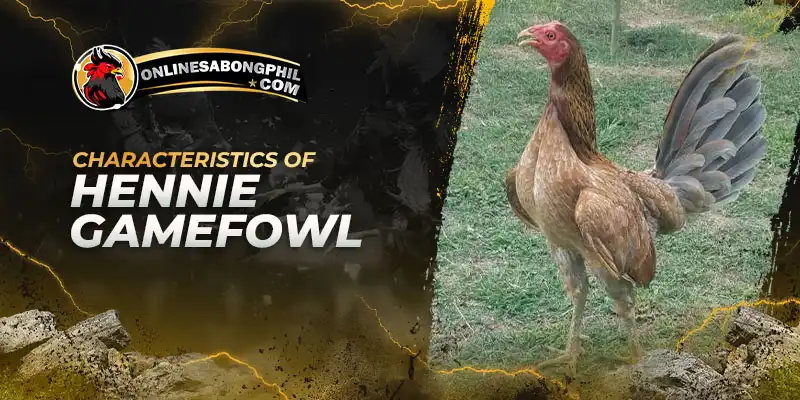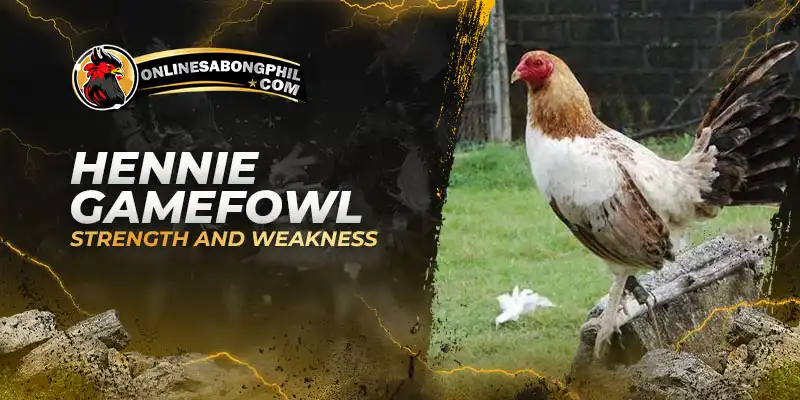Hennie Gamefowl are a popular breed of chicken originating from the Philippines, and they are known for their aggressive fighting qualities and stunning plumage. These medium-sized birds feature a distinct head shape and dark eyes. Hennies are prized for their gameness, intelligence, and athleticism, along with being great parents. Initially bred specifically for cockfighting, they’ve gained popularity as pets and exhibition birds. If you’re interested in owning Hennie Gamefowl, it’s crucial to find a reputable breeder and understand their need for ample space, a high-quality diet, and social interaction.
Hennie Gamefowl History
Hennie Gamefowl have roots in ancient India, likely sharing ancestry with other jungle fowl breeds from the region. They were eventually introduced to the Philippines through trade, and they became deeply ingrained in the local cockfighting culture.
Filipino breeders meticulously selected for traits like gameness, intelligence, and fighting skill, shaping the Hennie into a distinct breed. While their history is inseparable from cockfighting, modern-day Hennies are also gaining popularity as pets and exhibition birds. Their global spread continues, though their origins remain firmly tied to the Philippines.
Characteristics of Hennie Gamefowl
The Hennie Gamefowl is a medium-sized breed that blends both unique physical traits and intriguing behavioral characteristics, making it stand out among other chicken breeds. Here is a more detailed expansion on their traits:
Physical Traits
- Size: Typically, Hennie roosters weigh about 6 pounds, while hens are slightly lighter, typically around 4 pounds, reflecting their medium stature.
- Plumage: Their feathers can exhibit a variety of colors, including black, red, white, and brown, often accentuated with striking markings that can vary from bird to bird, contributing to their distinct appearance.
- Head Shape: Hennies feature a small, rounded head paired with a short, thick beak, giving them a robust and determined look.
- Eyes: Their eyes are usually dark brown or black, contributing to their keen and alert expression.
- Wattles and Earlobes: Both wattles and earlobes are small and uniformly red, often standing out against their varied plumage colors.
Behavioral Traits
- Gameness: Known for their exceptional gameness, Hennies demonstrate a high willingness to engage in combat and maintain resilience even under challenging circumstances.
- Intelligence: These birds are noted for their intelligence, capable of complex behaviors such as strategizing during encounters and adapting quickly to new environments or routines.
- Athleticism: Their physical agility is complemented by remarkable speed and coordination, making them agile on their feet and adept at maneuvering.
- Parenting Skills: As parents, Hennies are exceptionally attentive and nurturing, often seen diligently caring for their chicks, ensuring they are protected and well-fed.
Temperament
- Spirited: The spirited nature of Hennies, especially among roosters, is characterized by their competitive and fiery demeanor, which is often showcased during interactions with other birds.
- Alert: Constantly observant, these birds exhibit heightened awareness, always keeping an eye on potential threats or changes in their environment.
- Social: Despite their potential for territorial behavior, Hennies generally enjoy social interaction. They often thrive when raised in groups or pairs, showing social hierarchies and complex group dynamics.
Hennie Gamefowl exemplifies a blend of robust physical traits, keen intelligence, and vibrant social behaviors, making them a versatile and admired breed both in competitive arenas and as companions. Their dynamic qualities underscore the rich potential of selective breeding in gamefowl.
Hennie Gamefowl Fighting Style
Hennie Gamefowl possesses a distinct and effective fighting style that has made them popular in cockfighting circles. Here’s a breakdown of their key fighting traits:
- Speed and Agility: Hennies are known for their exceptional speed and agility. They can dodge attacks with precision and deliver quick, powerful strikes.
- Cutting Ability: Their fighting style emphasizes cutting actions, using their sharp spurs to inflict deep, damaging wounds on their opponents.
- Shuffling: A characteristic move is the “shuffle”—a rapid shifting of feet and evasive maneuvering designed to confuse and disorient their rivals.
- Power and Stamina: While not the largest gamefowl breed, Hennies pack a powerful punch. Coupled with their gameness, they can often wear down opponents with sustained attacks, even if they don’t possess an initial size advantage.
- Air Game: Some Hennies exhibit an inclination for aerial combat, leaping high to deliver blows from above. This adds an element of unpredictability to their fighting style.
- Intelligence and Adaptability: Hennies are intelligent fighters. They quickly analyze their opponent’s style and adjust their tactics accordingly, demonstrating adaptability in the fighting pit.
The Hennie Gamefowl’s unique fighting style combines agility, precision, and intelligence, making them highly regarded in traditional cockfighting despite the sport’s controversy.
Hennie Gamefowl Strengths and Weaknesses
The Hennie Gamefowl stands out in traditional combat sports with their unmatched determination, agility, and tactical intelligence. Here’s a breakdown of their strengths and weaknesses:
Strengths
- Gameness: Unmatched determination and fighting spirit, refusing to give up even when facing disadvantages.
- Speed and agility: Rapid movements, excellent dodging, and the ability to strike from unexpected angles.
- Cutting ability: Focus on inflicting precise, debilitating cuts with their sharp spurs.
- Intelligence: Adaptable fighters, analyzing opponents and adjusting their tactics on the fly.
- Power: Surprising strength for their size, delivering powerful blows capable of offsetting size disadvantages.
Weaknesses
- Size: Smaller than some gamefowl breeds, potentially making it harder to overpower larger opponents.
- Aggression towards their own kind: High levels of aggression, especially among roosters, making it challenging to keep them in groups.
- The tendency for the high station: Some bloodlines fight upright, leaving them vulnerable to attacks targeting their lower body.
- Potential ethical concerns: The history of cockfighting raises concerns, emphasizing the importance of responsible ownership and appreciation outside of bloodsports.
However, Hennies also face challenges due to their smaller size and aggressive nature, complicating their management. Given their history in cockfighting, responsible ownership and appreciation of their traits outside the arena are crucial.
Hennie Gamefowl Lifespan
Hennie Gamefowl typically live 5-8 years with proper care. Factors like genetics, diet, living conditions, and healthcare can influence their lifespan. With optimal care, some may live up to 10 years or longer. Regular veterinary check-ups and vaccinations are crucial for maximizing their health and lifespan.
Conclusion
Hennie Gamefowl is one of the best gamefowls. It is a complex breed with a controversial history in cockfighting. While their gameness and athleticism are remarkable, responsible ownership demands careful consideration of their aggression and ethical concerns. Beyond the fighting arena, those seeking to raise Hennies must provide ample space, a balanced diet, and appropriate social structures. Appreciation of their unique beauty and intelligence offers a fulfilling and ethical alternative to traditional uses.
Visit us at Onlinesabongphil.com for more guides and tips!



